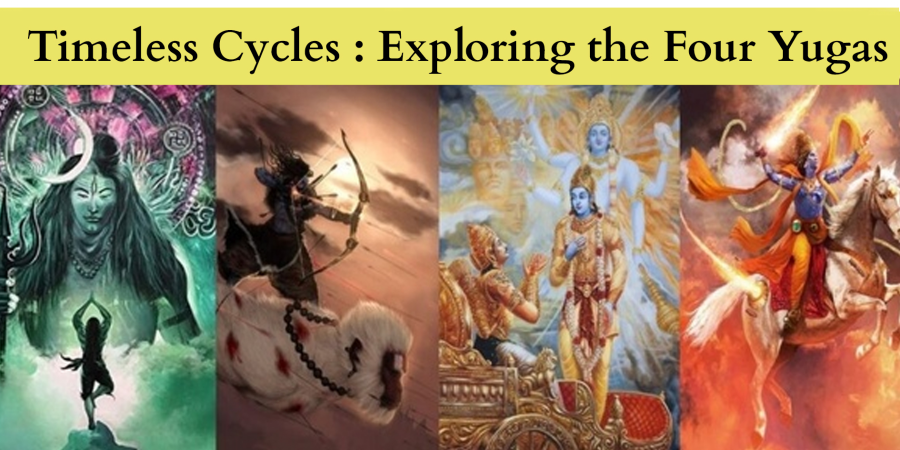

In Hinduism, there are four main yugas or epochs, each characterized by specific qualities and durations. These yugas are cyclical and repeat in a continuous cycle known as the "Yuga cycle." Here are the four yugas along with examples, explanations of how they are believed to manifest, and why they occur:
1. Satya Yuga (or Krita Yuga) :
Characteristics: Also known as the "Golden Age," Satya Yuga is believed to be the age of truth, righteousness, and purity. Virtue reigns supreme, and people are inherently good and spiritually advanced.
Duration: It lasts for 1,728,000 years.
Example: In the Satya Yuga, people are said to possess extraordinary powers, and society functions harmoniously without any form of corruption or injustice.
Why: Satya Yuga marks the beginning of the Yuga cycle, representing the ideal state of existence where dharma (righteousness) is upheld in its purest form.
2. Treta Yuga :
Characteristics: Treta Yuga is characterized by a decline in virtue and an increase in ego and desire. Sacrificial rituals become prevalent, and human lifespans decrease compared to the previous age.
Duration: It lasts for 1,296,000 years.
Example: During Treta Yuga, society experiences the emergence of kingdoms and organized civilizations. There is a shift towards more complex social structures and the development of early forms of governance.
Why: Treta Yuga represents a phase of transition where human beings begin to lose touch with their divine nature, leading to a gradual decline in moral values.
3. Dvapara Yuga :
Characteristics: Dvapara Yuga is marked by further deterioration of moral and ethical values. Materialism and greed become more prevalent, and spirituality declines.
Duration: It lasts for 864,000 years.
Example: In Dvapara Yuga, societal conflicts and wars become more frequent as people become increasingly driven by self-interest and desire for power and wealth.
Why: Dvapara Yuga symbolizes a period of increased spiritual ignorance and moral decay, leading humanity further away from its divine essence.
4. Kali Yuga :
Characteristics: Kali Yuga, also known as the "Age of Darkness," is characterized by widespread ignorance, corruption, and moral degradation. Human beings become predominantly driven by greed, selfishness, and material desires.
Duration: It lasts for 432,000 years.
Example: Kali Yuga is considered the current age in the Yuga cycle, where societal values are greatly diminished, and spirituality is at its lowest point. It is believed to be an age of conflict, suffering, and spiritual ignorance.
Why: Kali Yuga represents the final phase of the Yuga cycle, signifying the lowest point in human evolution before the cycle begins anew. It is believed that virtue will gradually decline until the end of Kali Yuga, at which point the cycle will reset with the beginning of Satya Yuga.
